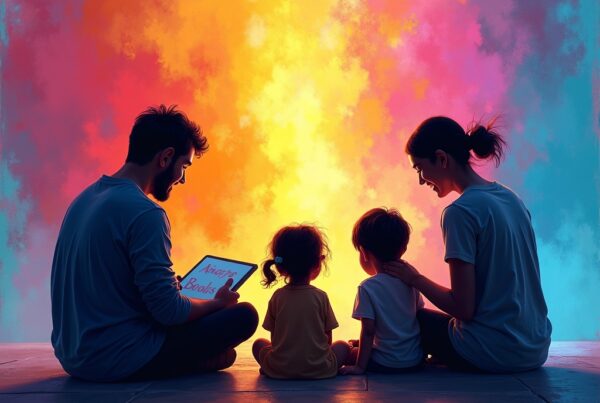Last Updated on December 17, 2025 by Lisa Whaley
Why Nonverbal Communication Matters: Every Movement, Gesture, and Sound Counts
Nonverbal moments in children with communication challenges, including those with autism, apraxia, or other speech delays, are never random. Every gesture, gaze, pause, body movement, or sound is part of a child’s effort to make sense of the world and to connect with those around them. For SLPs and families alike, noticing these signals is the very first bridge toward understanding, engagement, and expressive language.
- Nonverbal does not mean passive. Children communicate feelings, wants, dislikes, observations, and questions through every movement—even when words are hard to access.
- Missed moments mean missed connections. Interpreting and responding to these cues can dramatically reduce frustration for both child and adult, transforming the communication dynamic.
- Intentional observation is key. Instead of focusing only on spoken words, learn to see meaningful patterns in your child’s entire communication repertoire.
Understanding these nonverbal moments sets the stage for technology like Spkeasy to make a genuine impact, amplifying, interpreting, and supporting each cue your child gives.
Spotting Patterns in “Random” Nonverbal Moments
Children with speech challenges often repeat certain actions, movements, or sounds in daily routines. While these may seem random, they almost always have intention or meaning. Here’s how you can start recognizing and decoding them:
- Catalog Patterns: Keep notes or brief videos (following all privacy guidelines) of nonverbal behaviors that occur frequently. Are there times of day, environments, or activities that trigger these?
- Notice what precedes and follows: Is a certain gesture followed by a need (like wanting a snack, a break, or comfort)? Does a sound usually precede excitement or frustration?
- Involve all caregivers: Share findings with teachers, aides, or therapists. Consistent observation across settings sharpens accuracy.
- Use visuals: Pair photos, picture cards, or simple drawings with recurring nonverbal moments to reinforce connections for your child.
By reframing nonverbal moments as “messages” rather than “misbehaviors” or “mysteries,” you lay the groundwork for communication supports to succeed.
How Spkeasy Works: Turning Nonverbal Signals Into Expressive Language
Spkeasy is more than a speech app, it is a bridge between a child’s intent and a world that often requires spoken language to connect, participate, and be understood. It is designed specifically for children with speech challenges, putting safety and privacy front and center. Here is how Spkeasy supports nonverbal communication:
- Captures and amplifies: Spkeasy records and categorizes sounds, gestures, and behaviors (with explicit parental consent), making it easier for SLPs and families to see patterns and progress.
- Augmentative communication: Offers a selection of visual, auditory, and tactile prompts to help children express preferences, needs, and ideas, whether with words, images, or a combination.
- Personalizes: Vocabulary, visuals, and sentence starters can be tailored to each child’s experiences, routines, and favorite people or things—making communication meaningful and relevant.
- Encourages teamwork: Enables seamless collaboration among SLPs, teachers, and caregivers to ensure consistent support across home, school, and community.
Every time a child is engaged using Spkeasy, those seemingly “random” nonverbal moments are acknowledged and honored, creating a foundation for confident, joyful communication.
Step-by-Step: Using Spkeasy to Support Nonverbal Communication
The following simple workflow helps SLPs and families harness nonverbal moments and use them to build stronger communication and literacy skills:
- Identify regularly occurring nonverbal moments. Record short, non-intrusive observations (never without proper permissions or outside privacy policies) and match to common needs (“wants break,” “wants snack,” “needs help”).
- Translate patterns into cues. Use Spkeasy’s tools to attach images, text, or simple audio labels to help your child connect meaning to action.
- Model communication choices. Repeatedly demonstrate, through Spkeasy, how to use the device or system to make a request, share a feeling, or comment on what’s happening.
- Reinforce across settings. Make Spkeasy part of routines at home, in therapy, and at school—ensuring consistency and comfort for your child.
- Celebrate every attempt. Any use of the app, no matter how “small”, is progress.
Protecting Children’s Privacy: How Spkeasy Stays Compliant and Safe
For parents and SLPs, using technology with nonverbal children is not just about functionality, it is about trust and safety. Apps like Spkeasy, by design, must strictly adhere to children’s privacy laws such as COPPA (Children’s Online Privacy Protection Act), HIPAA (Health Insurance Portability and Accountability Act, when dealing with healthcare providers), and state-level design codes. Here’s what you need to know about supporting your child securely:
- Consent-first approach: Spkeasy always requires verifiable parental consent before capturing or storing any personal data, including audio or images. Parents can review, delete, or control the use of collected information at any time.
- Limited data collection: Only information critical to the app’s function is collected, and data minimization is a core principle, protecting your child’s identity and privacy at every step.
- Enterprise-level security: Data is encrypted in transit and at rest, and access is restricted only to authorized parents, professionals, and caregivers explicitly tied to the child’s support team.
- Transparency: Privacy policies are clear, accessible, and written in parent- and child-friendly language so you always know how information is handled.
- No third-party marketing or ad profiling: Spkeasy does not allow the use of persistent identifiers or advertising profiles. All integrations are strictly vetted for compliance.
These steps ensure Spkeasy upholds the highest trust and safety standards in the industry, helping you focus on your child’s learning and social growth with full peace of mind.
Integrating Spkeasy Into Your Daily Communication Routines
Consistency and context are everything. By integrating Spkeasy into everyday moments, you build comfort and fluency, not just with the app, but with the very concept of expressive language. Here’s how to start:
- Embed into routines: Use Spkeasy during common activities: mealtimes (picking foods), playtime (choosing games), reading sessions (commenting on pictures), and transitions (expressing “all done” or “want more”).
- Personalize the experience: Regularly update the vocabulary and images based on your child’s latest interests, favorite foods, classmates, and activities. Relevancy increases engagement.
- Model and expand: Adults and peers should model use by “talking” through Spkeasy, fostering turn-taking and demonstrating that all communication is valued.
- Share successes: Involve siblings, extended family, teachers, and friends in celebrating progress, however small.
Over time, the app becomes more than a tool, it becomes a “voice” your child owns and feels proud to use.
Building Literacy and Social Skills with Spkeasy
AAC tools like Spkeasy can support not just speech, but crucial building blocks for reading, writing, and confidence. Here are some literacy and social skill strategies:
- Pair print with icons: Match book words and pictures to corresponding buttons in Spkeasy to reinforce meaning and support early reading.
- Ask open-ended questions: Instead of yes/no, offer choices or prompts like “What do you see?” or “Who is in the picture?” using visuals where needed.
- Let children “write”: Encourage creation of simple messages, stories, or lists using Spkeasy, supporting emergent writing and independence.
- Turn-taking and social play: Use Spkeasy to support games, routines, and peer communication, for instance, prompting “Your turn!” or “Let’s play!”
Every click, selection, or attempt with Spkeasy is a meaningful part of your child’s emerging literacy and social life.
Supporting Parents and SLPs: Resources and Ongoing Guidance
Communication is a team effort. Spkeasy supports parents and professionals with:
- Shared boards and vocabulary sets: SLPs can create story-specific or routine-based sets for use at home and school, building consistency.
- Home-school connections: Easily send suggestions, progress notes, or communication plans between families and therapists for smooth carryover.
- Parent-friendly resources: Access short video demos, tip sheets, and troubleshooting guides built into Spkeasy to boost confidence and understanding.
- Continuous updates: Feedback and new features are informed by real users, ensuring Spkeasy evolves as your child grows.
Common Questions About Using Spkeasy for Nonverbal Communication
- Is Spkeasy suitable for all ages and levels of speech?
- Yes. Spkeasy is highly customizable for emergent communicators as well as older children and teens. It supports a variety of abilities and learning profiles.
- What if my child resists using Spkeasy?
- Start with high-interest activities and favorite vocabulary. Make it fun and stress-free. Model use and celebrate small wins, engagement will grow with consistency and relevance.
- How do I keep my child’s data private and secure?
- Always review privacy policies. Spkeasy uses encryption, gives you full control over data, does not share information with third parties, and follows strict COPPA and HIPAA principles.
- Can Spkeasy help my child with reading and writing?
- Absolutely. Incorporate book vocabulary, story retell prompts, and emergent writing activities. Spkeasy supports cross-skill growth for literacy and social participation.
- What support is available for parents and professionals?
- Spkeasy offers built-in guides, shared resources, and an engaged support team. You can access the help you need directly within the app.
Final Thoughts: Celebrate Every Nonverbal Moment
When you recognize the intent and effort behind your child’s nonverbal moments, you give them the gift of being seen and heard. With tools like Spkeasy, the journey from gesture to word, from silence to shared story, becomes empowering for both your child and your whole support team. Every moment matters. Every child can communicate. And with the right supports and safeguards, every family can find joy and connection, one “random” moment at a time.
Key Takeaways and Next Steps
- There is meaning in every nonverbal moment, your child is always telling you something.
- Spkeasy translates intention into communication, with strong safety and privacy at its core.
- Integrate Spkeasy into daily life, personalize it for your child, and celebrate progress together.
- Review privacy policies and know your rights, your child’s dignity and safety come first.
- Communication is a journey, and you are not walking it alone.




















